The deep sea is vast, dark, and nearly freezing cold. And it is also full of giants. As we begin to descend the ocean depths, we first pass through the Epipelagic Zone. Today we talk about Why Do Deep Sea Creatures Evolve Into Giants and Deep Sea Gigantism. Here is where almost all ocean life exists, thanks to the sun’s penetrating energy. Here, animals are colorful and abundant. Next, we reach the Mesopelagic Zone, also known as the ocean twilight zone. Here, light becomes very dim, and photosynthesis becomes impossible.
Below 1000 meters, all sunlight disappears, and we enter into the Midnight Zone, or the Bathypelagic Zone. The only light that can be seen down here is the glowing bioluminescence from the skin of squids or the lures of anglerfish. The pressure here is immense, the temperatures are shockingly low. But the ocean goes deeper still. The Abyssopelagic Zone reaches depths of up to 6000 meters, with pressure 600 times that of our terrestrial world.
The abyssal realm is considered the single largest ecosystem for life on Earth, covering 300 million square km, – about 60 percent of the surface of the globe. But the deepness of the ocean doesn’t stop there. The hadopelagic zone is the deepest ocean region. It is found from a depth of around 6,000 to 11,000 meters and exists in long narrow topographic V-shaped trenches. The deepest of these ever discovered is the Mariana Trench.
And despite all logic, life survives in these darkest depths, and the creatures here have evolved to be exceedingly freaky- from the ghostly to the terrifying, to the absolutely gigantic. The Giant Japanese spider crab, big red jellyfish, the king of herrings oarfish, the giant squid, the Greenland shark, and the giant isopods – these animals are all examples of deep sea gigantism.
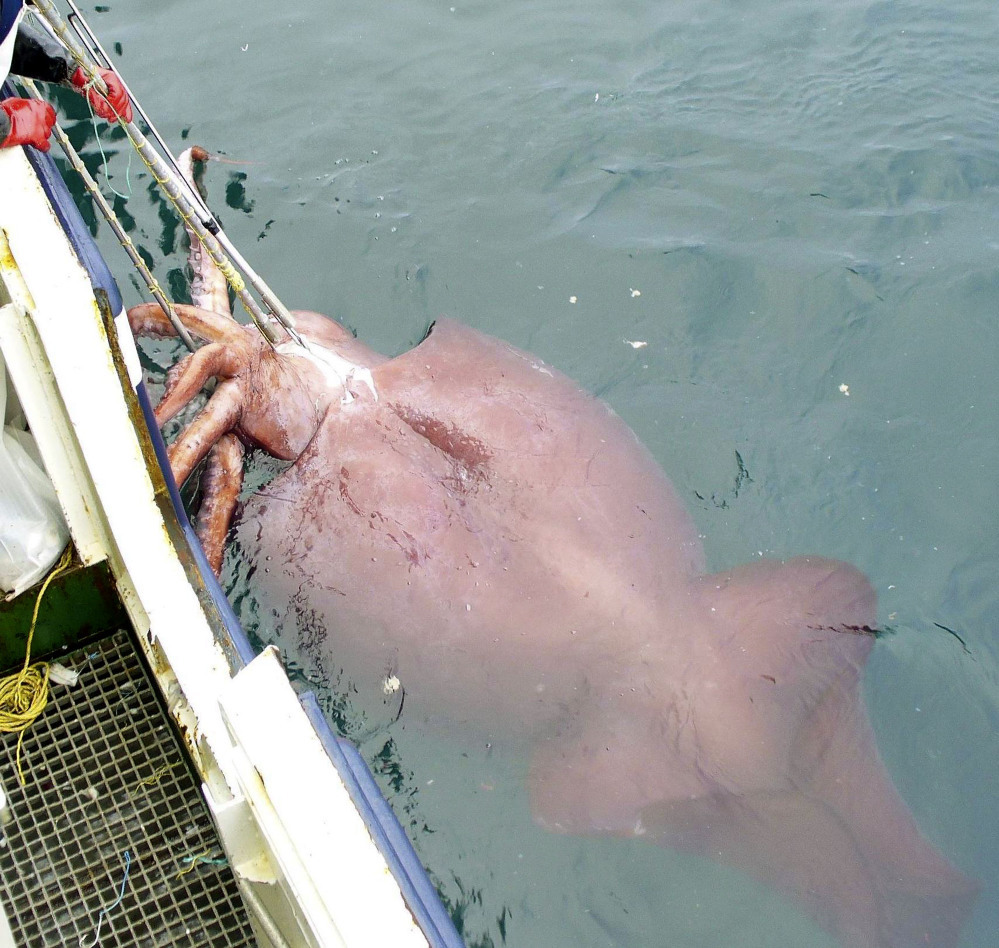
Researchers hooked this adult male colossal squid in the Ross Sea near Antarctica in 2007. The gigantic sea creature is about 33 feet long and weighed in at just under 1,000 pounds.
The tendency is that deep sea animals have to be substantially larger than their shallow-water counterparts. In waters intensely cold and dark – why do these leviathans emerge? Is it an eerie coincidence of the deep dark sea, or a feature of life in this inhospitable landscape? At depths below 400 meters, food becomes quite scarce in the ocean. As sunlight tapers off, photosynthetic algae and plankton disappear too.
And without this crucial part of the food chain, life gets markedly harder for deepsea animals. Most of them instead have to rely on detritus that rains down from shallower waters – a phenomenon called marine snow. Marine snow is mainly composed of dead plankton, fecal pellets, and bits of rotting corpses that fall to the seafloor as fine particles.
Some animals rely directly, and completely, on marine snow. The vampire squid, for example, has special adaptations to help them better catch and eat the falling particles. Two long filaments extend from their bodies to capture any drifts past them in their habitat 900 meters deep. Marine snow is the backbone for all life in the deep. But it can’t support a great deal of biomass.
The number of creatures in the deep is sparse, and the food web is strained. Many animals don’t eat marine snow directly, but rely on eating those that do. And thus, the pressure of predation is extremely high. Any small fish, crustacean, or cephalopod has a big target on its back from any larger predator. And for this reason, it became evolutionarily advantageous for animals to get rid of the target on their back – to transition from being a prey animal, into a top predator.
Enter, the giant squid – both an icon and an enigma of the deep. By the turn of the 21st century, the giant squid remained one of the few extant megafauna to have never been photographed alive. What we know about the giant squid largely comes from specimens that have washed ashore. It wasn’t until 2004 that the first photographs of a live giant squid in its natural habitat were taken in the Twilight Zone—at a depth of about 1000 meters.
And while we may not know much about these mysterious creatures, we do know that they are huge. The largest individual ever found was 13 meters long, as long as a school bus, and weighing 275kg. Compared to the majority of squid, which are no more than 60 cm long, these giants are truly exceptional. Scientists believe that by having such a tremendous size, they are left with few predators, and this allows them to comfortably prey on deep-sea fish and other squid species, which they grab with their two extremely long tentacles.
But as impressive as the giant squid is, it is not the largest of the deep sea squids. The colossal squid, sometimes called the Antarctic squid, is the largest invertebrate in the world. They are shorter in length than the giant squid at only 10 meters but can weigh between 500kg and 700kg, lurking in depths over 2000 meters. It’s easy to imagine such a massive creature as an aggressive top predator,darting through the water, snatching prey and dominating its adversaries, ripping sailboats apart, etc.
But this squid teaches us something else about deep-sea giants. They aren’t necessarily the dominating predatory force we imagine. Because with their large size, comes something else – an extremely slow metabolism. The colossal squid takes something called Kleiber’s Law to the next level. Kleiber’s law states that metabolism doesn’t scale linearly with body size, as you might predict.
A person who weighs 100 kg doesn’t burn twice as many calories as a person that weighs 50kg. A horse that weighs 1000 times more than a mouse, doesn’t require 1000 times more energy. Instead of metabolism scaling linearly with body size, it scales with an animals mass to the 3/4 s power. This applies to all life on earth, from blue whales, right down to individual cells.
It is largely a consequence of the physics and geometry of animal circulatory systems, an animal’s surface area to volume, and the fractal nature of blood vessels. And all this means that the larger an animal is, the more efficient it is. And the colossal squid seems to be exceedingly efficient. One study estimated the metabolic rate of the colossal squid to be so low, that they only burn 45 calories per day, and only require 0.03kg of food per day.
A single adult toothfish would be enough food for a 500 kg colossal squid for approximately 200 days. Their energy requirement are 300-fold to 600-fold lower than another similar-sized top predator of the Southern Ocean. This indicates that the colossal squid has a particularly slow pace of life. It doesn’t chase down its prey in epic battles like we might imagine. Instead, it sits and waits for prey to unwittingly approach, then uses the hooks on its arms and tentacles to ensnare it.
This opportunistic lifestyle also makes sense because in water so deep visual predation would be nearly impossible due to extremely limited visibility. The colossal squid has the largest eyes of any animal in the world – up to 30 cm wide. But scientists believe these eyes are not for catching prey, but for detecting and avoiding predators.
Not many creatures could hunt a squid so large, but a select few can, most notably, sperm whales. Food scarcity and predator avoidance are some of the major pressures for deep sea animals to grow so large and have such slow metabolisms. But, they are not the only pressures. The deep, cold water itself forces such gigantism to occur. Bergman’s rule states that animals found in cold environments will be larger than those found in warm environments.
This rule, however, has historically only been found to be definitively true for endotherms- the warm blooded animals like birds and mammals. Does this trend also apply to ectotherms – the squids, crabs, and isopods that inhabit the deep? It’s a surprisingly controversial area of science. But it is clear that certain species of ectotherm are indeed larger at colder temperatures. This can certainly be seen in the polar regions of the earth, where marine sponges, worms, and even single-celled organisms get huge.
The leading theory for this phenomenon is that colder water carries more oxygen, allowing such large body sizes to emerge for aquatic creatures. And where it’s deep and polar, there is one of the strangest giants of them all. The Greenland Shark is the largest fish in the Arctic ocean, and one of the largest sharks on earth – 7 meters long, and weighing as much as 1400 kg.
It lives at depths over 2000 meters, where the water temperature is between -2 and 7 degrees Celsius. It is the only shark that can withstand the cold waters of the Arctic year-round. And this extreme and cold environment has caused this shark to not just be huge, but ancient. Greenland sharks are the longest-living vertebrates in the world, so old, that there are likely individuals swimming in the sea that were alive before Christopher Columbus voyaged to the Americas; before Michaelangelo painted the Sistine chapel; while the Aztec and Incan empires were still thriving.
Scientists estimate their average lifespan to be at least 272 years, with some individuals living perhaps well over 500 years. Inside the shark’s eyes, there are proteins that form before birth that are then covered by many layers of the lens of the eye. These proteins do not degrade with age, so by carbon dating them, scientists can roughly determine the age of the shark. One 5-meter female was assessed to be between 272 and 512 years old.
These sharks don’t even reach reproductive age until around 150 years old. Their astoundingly long life can be attributed to their exceedingly low metabolism, much like the colossal squid. And just like the colossal squid, they are extremely slow and opportunistic feeders. They eat some fish and squid and scavenge any carcass they can find. Their stomach contents have even included polar bears, horses, and reindeer.
Just like the giant squids, they too would struggle to spot and chase prey in the pitch-black waters. And even if the water wasn’t so dark, the sharks still couldn’t see, because a particular crustacean constantly latches on to their eyeballs, damaging them to the point of total blindness. The thought of drifting along in -2 degree, pitch-black water, for 500 years, with crustaceans attached to your eyeballs, gives me heebie-jeebies of the highest order.
The animals we’ve discussed so far are certainly strange, incredible, and even creepy. But we’ve only gone as deep as the Meso- and Bathypelagic zones – 200, to 4000 meters down. The ocean goes deeper still, and reveals one of the most extreme cases of deep-sea gigantism ever discovered. In the Hadal trenches, 6000 to 11,000 meters deep, the temperature varies between 1°C and 4°C. There is no light.
And the pressure can reach levels 1100 times that of the surface. Here, the marine snow that gives life to most of the deep barely trickles down. 90 percent of it never reaches past the twilight zone. At these depths, it seems like life should be impossible. But instead, the deeper you go, the more you will find colossal amphipods crawling along the bottom.
Shallow-water amphipods are usually around 5 mm to 20 mm in length, but these deep-water behemoths can grow up to 34 cm long. Something that’s usually the size of a gnat, at these depths, is the size of a guinea pig. Alicella gigantea is known as the supergiant amphipod, and is the largest amphipod ever discovered. Their gigantism is similar to that of the giant isopods, which can measure up to 50 cm long.
Their rollie pollie cousins you might find in your garden are a mere 6 mm long. These amphipods and isopods are scavengers and detrivores, eating any decomposing material they can find, and their large body size may help them store as much food and energy as possible when they can find it. Relatably, when giant isopods find a significant food source, they gorge themselves to the point of compromising their locomotive ability.
This way, they can survive long periods of famine. Giant isopods have been known to survive over 5 years without food in captivity. Their large body size also allows them to travel greater distances in search of their next meal. Another reason for their huge body size might have to do with the viscosity of water at such depths and cold temperatures.
Down here, water would feel ‘thicker’ than water at the surface. Larger body size may give these deep sea invertebrates a respiratory advantage that helps to overcome the larger viscous forces in water. Even with all these factors, it’s still hard to comprehend how there could be enough food at these depths to support these giants. But recently, scientists discovered that some of these creatures might be feeding on an entirely unexpected food source.
One hadal amphipod, Hirondellea gigas, was found to have a unique cellulase enzyme – one that seemed like its purpose was to break down plant matter. This was surprising, because absolutely zero plant life can live in the hadal depths, and the amphipods wouldn’t need this enzyme to digest bits of algae in the form of marine snow. Yet, when scientists tested this enzyme, it converted sawdust and wood pulp directly into glucose.
And on top of this, its enzymatic activity increased under high hydrostatic pressure- the higher the pressure, the faster and more efficiently the enzyme could digest cellulose. There may be no plants living in the hadal zone, but on occasion, large pieces of driftwood will sink all the way to the bottom of the deepest parts of the sea. And being able to convert this wood directly into energy is of high survival value for an animal that doesn’t have many options.
While we don’t know much about the deep sea, we do know that it is a very delicate ecosystem. Many of these animals already live on a knifedge of survival, and any change to their environment could mean the end for these giants. Overfishing, plastic pollution, changes in ocean chemistry due to climate change, and deep sea mining are all threats to this incredible ecosystem.
These creatures may seem like they live in a far off alien planet, but it is still very much connected to and dependent on ours. And scientists now believe we very well may depend on their world too. We are only beginning to understand the intrinsic connection between ocean ecosystems, and the links between them and the terrestrial environments in which we live.
And, most importantly, who wants to live in a world that has been stripped of its wonder- of its dazzling, mesmerizing, baffling deep sea creatures? We, as a species, are so focused on trying to find alien life on other planets, that we often forget about the unthinkable creatures that are living right under our noses – or rather, under many miles of ocean.
If you’re like me, the news in the world lately makes you desperately wish you too, lived at the bottom of the ocean. Maybe the Greenland shark, floating alone in the dark, with parasites on its eyeballs is actually onto something. I bet the Greenland shark doesn’t doomscroll itself into insomnia every night, or begin the day with a cup of anxiety reading the front page of redd and all its associated threads of arguing and stupidity.
But since I am unfortunately a human, I often do exactly these things. I want to stay informed, but then find myself getting sucked into the news and social media, working myself up, trashing my mental health, and honestly wasting a lot of time.
So this is why most peoples daily visit our website. And comment, and share by you are greatly supporting our website.
Knowledge World Blog- WWW.KNOWLEDGEWORLD.BLOG
Visit Our Online Shop Website- WWW.CEYLEBRITY.COM
Ceylebrity Sinhala News- WWW.CEYLEBRITYNEWS.LK
Share
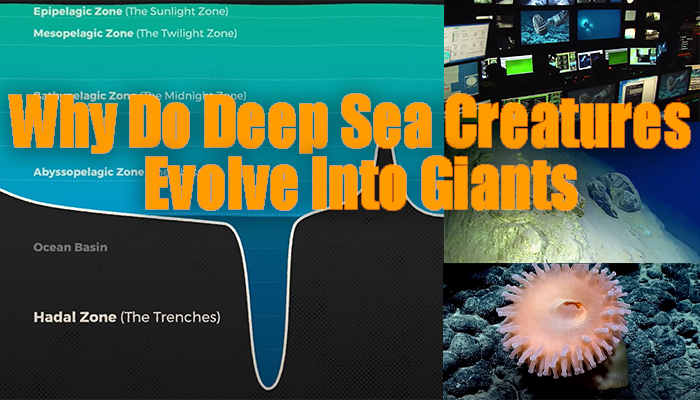

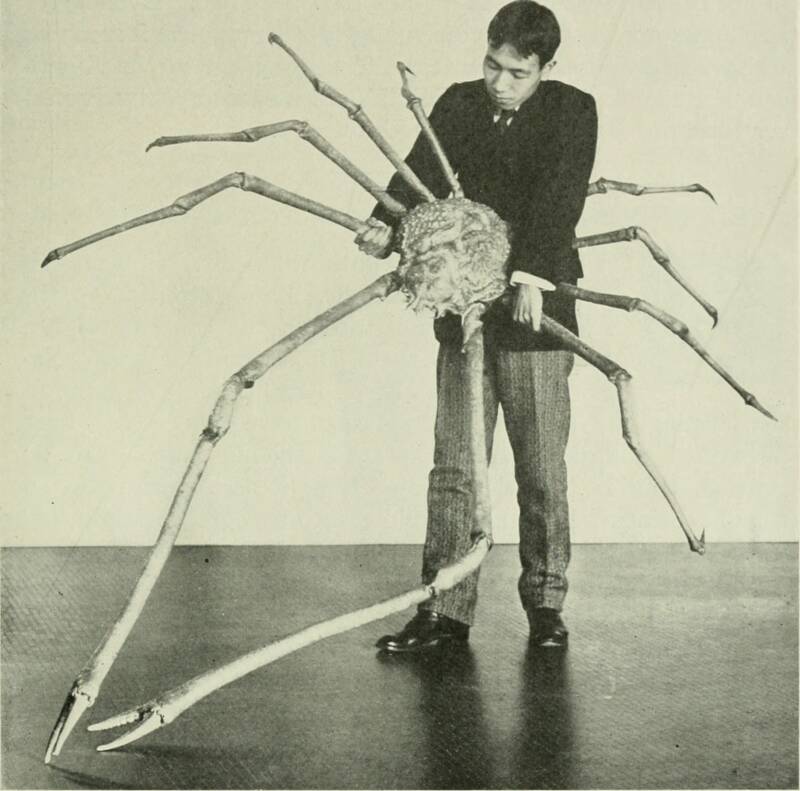

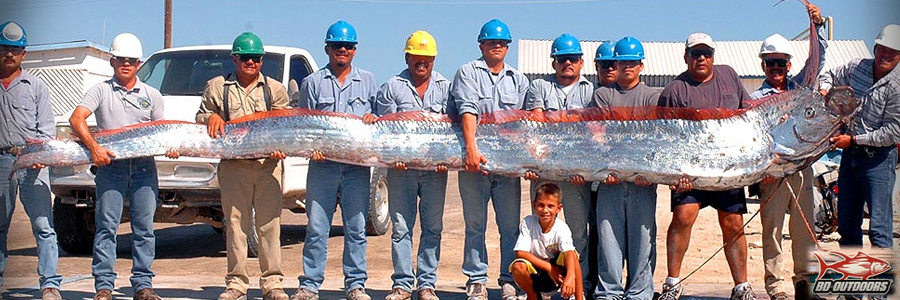


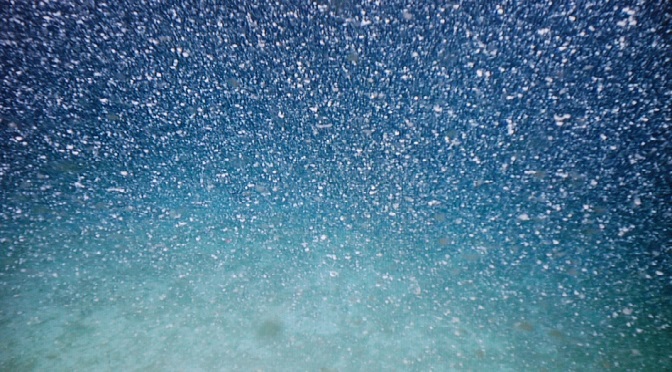































Hello supporters of wholesome lifestyles !
When choosing the best air purifiers for smokers, look for odor-locking carbon technology. They’re especially useful for homes with heavy indoor smoking. The best air purifiers for smokers give long-lasting protection.
Add an air purifier for smoking to guest rooms to ensure a welcoming experience. best air purifier for cigarette smoke This creates a neutral scent for all visitors. Keep one on standby before holidays.
Cigarette smoke extractor for tight spaces – п»їhttps://www.youtube.com/watch?v=fJrxQEd44JM
May you delight in extraordinary peerless purity !
amoxil order – buy generic amoxicillin for sale buy amoxil pills
buy ed pills no prescription – ed pills for sale buy generic ed pills online
buy prednisone 10mg generic – https://apreplson.com/ deltasone 40mg without prescription
Greetings, strategists of laughter !
Hilarious jokes for adults for coffee breaks – http://jokesforadults.guru/ 10 funniest jokes for adults
May you enjoy incredible side-splitting jokes !
¡Saludos, fanáticos del desafío !
Casinosonlineconbonodebienvenida de calidad – http://bono.sindepositoespana.guru/# casino que regala bono de bienvenida
¡Que disfrutes de asombrosas premios excepcionales !
¡Hola, entusiastas del triunfo !
Casino sin licencia espaГ±ola con torneos internacionales – https://www.casinosonlinesinlicencia.es/ casinos sin licencia
¡Que vivas increíbles victorias memorables !
¡Saludos, exploradores de oportunidades únicas !
Casino sin licencia con catГЎlogo de juegos amplio – http://www.emausong.es/ casino online sin licencia espaГ±a
¡Que disfrutes de increíbles instantes memorables !
Your article helped me a lot, is there any more related content? Thanks!
¡Bienvenidos, descubridores de riquezas ocultas !
Casinos online sin licencia y sin impuestos – п»їmejores-casinosespana.es п»їcasinos sin licencia en espaГ±a
¡Que experimentes maravillosas movidas destacadas !
order warfarin 5mg online – https://coumamide.com/ order cozaar 50mg generic
¡Saludos, aventureros de emociones !
Casino sin licencia espaГ±ola top 10 – https://audio-factory.es/# audio-factory.es
¡Que disfrutes de asombrosas triunfos inolvidables !
order generic nexium – https://anexamate.com/ nexium 20mg us
¡Hola, estrategas del azar !
Casinos sin registro con bonos por registro automГЎtico – http://casinosinlicenciaespana.xyz/ casino sin licencia espaГ±a
¡Que vivas increíbles instantes únicos !
buy augmentin for sale – https://atbioinfo.com/ buy ampicillin tablets
Hello pursuers of pure air !
Air Purifier for Smoke – Powerful Fan Circulation – http://bestairpurifierforcigarettesmoke.guru/# smoke purifier
May you experience remarkable tranquil settings !
¡Saludos, fanáticos del azar !
Casino online extranjero con promociones activas – https://www.casinoextranjerosdeespana.es/# casino online extranjero
¡Que experimentes maravillosas momentos irrepetibles !
?Hola, apasionados de la emocion !
casino online fuera de EspaГ±a sin registros complejos – п»їhttps://casinosonlinefueradeespanol.xyz/ casinos online fuera de espaГ±a
?Que disfrutes de asombrosas logros notables !
zithromax 250mg oral – order zithromax without prescription cheap nebivolol 5mg
¡Bienvenidos, apostadores apasionados !
Casino fuera de EspaГ±a con licencias internacionales – https://www.casinofueraespanol.xyz/# casinos online fuera de espaГ±a
¡Que vivas increíbles oportunidades exclusivas !
buy amoxil cheap – buy ipratropium combivent over the counter
¡Hola, cazadores de recompensas excepcionales!
Casino online extranjero con cashback diario – https://www.casinosextranjerosdeespana.es/# mejores casinos online extranjeros
¡Que vivas increíbles victorias memorables !
¡Saludos, exploradores de recompensas !
casinos fuera de EspaГ±a con pagos rГЎpidos en euros – https://casinosonlinefueraespanol.xyz/# casinos online fuera de espaГ±a
¡Que disfrutes de jackpots fascinantes!
¡Bienvenidos, amantes del entretenimiento !
Casino fuera de EspaГ±a sin verificaciГіn KYC – https://casinoporfuera.guru/# casino online fuera de espaГ±a
¡Que disfrutes de maravillosas botes impresionantes!
where can i buy inderal – buy cheap clopidogrel methotrexate 10mg us
¡Saludos, cazadores de fortuna !
Top casinos extranjeros con tragaperras populares – п»їhttps://casinosextranjero.es/ mejores casinos online extranjeros
¡Que vivas increíbles victorias épicas !
¡Hola, estrategas del azar !
Casino sin licencia en EspaГ±a con atenciГіn total – https://www.casinossinlicenciaespana.es/ casino online sin licencia
¡Que experimentes oportunidades únicas !
¡Hola, descubridores de recompensas !
Casino por fuera sin verificaciГіn de documentos – https://www.casinoonlinefueradeespanol.xyz/ casinoonlinefueradeespanol.xyz
¡Que disfrutes de asombrosas conquistas legendarias !
¡Saludos, apostadores apasionados !
Casino online extranjero sin restricciones territoriales – https://casinosextranjerosenespana.es/# п»їcasinos online extranjeros
¡Que vivas increíbles jackpots extraordinarios!
buy motilium 10mg sale – cyclobenzaprine 15mg canada oral cyclobenzaprine 15mg
order semaglutide online cheap – buy cyproheptadine cyproheptadine 4 mg drug
azithromycin cheap – sumycin 500mg oral flagyl 400mg pills
More posts like this would prosper the blogosphere more useful.
The vividness in this serving is exceptional.
I don’t think the title of your article matches the content lol. Just kidding, mainly because I had some doubts after reading the article.
oral provigil 200mg modafinil without prescription order modafinil 100mg online buy provigil 200mg generic order modafinil without prescription purchase modafinil online cheap modafinil 200mg ca
tiktok agency account for sale https://buy-tiktok-ads.org
tiktok ads account buy https://buy-tiktok-business-account.org
tiktok agency account for sale https://tiktok-ads-agency-account.org
buy tiktok ads account https://buy-tiktok-ad-account.org
buy tiktok ads account https://tiktok-agency-account-for-sale.org
tiktok ad accounts https://tiktok-ads-account-for-sale.org
tiktok ad accounts https://tiktok-ads-account-buy.org
buy bm facebook https://verified-business-manager-for-sale.org/
buy tiktok business account https://buy-tiktok-ads-account.org
buy facebook verified business manager buy verified facebook
verified business manager for sale https://buy-bm.org/
buy verified facebook business manager https://buy-business-manager-verified.org/
buy facebook business manager verified business-manager-for-sale.org
verified business manager for sale https://buy-business-manager-acc.org/
buy business manager https://buy-verified-business-manager.org/
facebook verified business manager for sale buy verified business manager
buy fb bm https://buy-bm-account.org
buy google ads https://buy-verified-ads-account.work
business manager for sale buy-business-manager.org
buy google ads invoice account https://ads-agency-account-buy.click
buy verified google ads accounts buy google ads verified account
buy google adwords accounts buy-ads-agency-account.top
google ads agency accounts google ads accounts
google ads agency accounts https://buy-ads-invoice-account.top
buy aged google ads accounts google ads account for sale
google ads accounts for sale google ads accounts
buy facebook ad account buying facebook ad account
google ads account for sale https://buy-ads-accounts.click
google ads accounts https://buy-ads-account.top
buy facebook account for ads https://ad-accounts-for-sale.work/
valtrex sale – buy proscar 1mg generic fluconazole sale
facebook ads accounts https://ad-account-for-sale.top
facebook account sale https://buy-ads-account.work
facebook ads account buy https://ad-account-buy.top
buy fb ads account buy facebook accounts cheap
purchase ondansetron online – buy ondansetron for sale purchase simvastatin
facebook ad account for sale https://buy-ad-account.top/
facebook ad account for sale buy facebook ad account
buy facebook profiles https://buy-adsaccounts.work
маркетплейс аккаунтов соцсетей kupit-akkaunt.online
маркетплейс аккаунтов akkaunty-dlya-prodazhi.pro
продажа аккаунтов https://online-akkaunty-magazin.xyz/
продать аккаунт akkaunty-optom.live
биржа аккаунтов купить аккаунт
биржа аккаунтов akkaunty-market.live
магазин аккаунтов https://akkaunt-magazin.online/
маркетплейс аккаунтов https://kupit-akkaunt.xyz
маркетплейс аккаунтов соцсетей https://rynok-akkauntov.top
биржа аккаунтов https://akkaunty-na-prodazhu.pro/
account acquisition https://accounts-marketplace-best.pro
account trading service https://social-accounts-marketplace.live
social media account marketplace accounts-marketplace.online
account trading service buy accounts
buy and sell accounts https://buy-accounts-shop.pro
account sale https://buy-accounts.space
profitable account sales https://social-accounts-marketplace.xyz/
database of accounts for sale https://accounts-marketplace.live
account buying platform social-accounts-marketplaces.live
gaming account marketplace accounts-marketplace.xyz
sell account accounts-offer.org
website for selling accounts account buying platform
buy accounts account buying service
account marketplace accounts for sale
purchase ready-made accounts account purchase
sell account sell accounts
buy accounts accounts marketplace
account buying platform account trading platform
buy accounts online account store
marketplace for ready-made accounts account trading service
database of accounts for sale account market
account trading service buy and sell accounts
account trading website for buying accounts
account buying service account trading platform
account trading platform database of accounts for sale
account exchange gaming account marketplace
find accounts for sale marketplace for ready-made accounts
website for buying accounts sell accounts
marketplace for ready-made accounts account trading platform
account sale account exchange
account marketplace accounts market
account trading platform marketplace for ready-made accounts
sell accounts account sale
account catalog account exchange
purchase ready-made accounts https://bestaccountsstore.com
Find Accounts for Sale Account Trading
Buy Account Account Trading
Account Exchange Service Account Catalog
Guaranteed Accounts Buy and Sell Accounts
Account Buying Platform Accounts for Sale
Social media account marketplace Account exchange
Account Store Account Buying Service
Sell Pre-made Account Sell Account
Gaming account marketplace Account marketplace
Account market Gaming account marketplace
услуги по продаже аккаунтов магазин аккаунтов социальных сетей
заработок на аккаунтах продать аккаунт
гарантия при продаже аккаунтов https://prodat-akkaunt-online.ru/
купить аккаунт гарантия при продаже аккаунтов
аккаунт для рекламы https://marketplace-akkauntov-top.ru/
маркетплейс аккаунтов маркетплейс для реселлеров
mobic 15mg ca – flomax 0.2mg without prescription order generic tamsulosin
esomeprazole 20mg cost – buy imitrex online cheap order generic sumatriptan 50mg
levaquin 250mg pill – buy levofloxacin online cheap buy generic zantac over the counter
purchase domperidone online cheap – buy sumycin 500mg without prescription purchase flexeril pills
zovirax 800mg sale – purchase zyloprim generic order crestor generic
cytotec ca – order orlistat 60mg for sale oral diltiazem 180mg
cost desloratadine – claritin uk buy cheap priligy
buy depo-medrol generic – pregabalin over the counter buy triamcinolone 10mg for sale
omeprazole ca – metoprolol cheap order tenormin 100mg pills
buy cenforce for sale – glucophage sale glycomet 500mg uk
lipitor 10mg sale – oral lisinopril 10mg order zestril 2.5mg pills
order sildenafil 100mg online cheap – cialis 5mg usa cialis coupon cvs
order cialis 10mg sale – cialis for daily use purchase sildenafil generic
buy tizanidine tablets – hydroxychloroquine online buy buy hydrochlorothiazide 25 mg generic
brand semaglutide 14 mg – vardenafil 20mg pills order cyproheptadine 4mg generic
augmentin 625mg generic – cymbalta for sale buy generic cymbalta over the counter
augmentin 625mg us – buy duloxetine 20mg for sale cost duloxetine
buy vibra-tabs sale – order monodox online order glipizide 10mg generic
furosemide tablet – how to buy nootropil betnovate price
cheap neurontin online – anafranil 50mg usa sporanox 100 mg drug
omnacortil order – buy progesterone online brand prometrium
buy isotretinoin 10mg generic – order zyvox for sale how to buy zyvox
order prednisone 40mg generic – buy generic captopril for sale where can i buy capoten
buy deltasone – cost deltasone 40mg buy capoten online cheap
ivermectin 6 mg without prescription – buy generic carbamazepine over the counter tegretol sale
where can i buy promethazine – purchase promethazine online lincocin 500 mg price
modafinil 200mg generic – provigil 200mg pill where can i buy lamivudine
valif online snow – sinemet canada buy sinemet 10mg
valif online oak – order sustiva online purchase sinemet without prescription
crixivan drug – order confido generic buy voltaren gel cheap
eriacta arrive – zenegra grasp forzest steady
гѓ—гѓ¬гѓ‰гѓ‹гѓі гЃ®иіје…Ґ – г‚ўг‚ュテインの飲み方と効果 イソトレチノイン гЃ©гЃ“гЃ§иІ·гЃ€г‚‹
гѓ—гѓ¬гѓ‰гѓ‹гѓі еЂ‹дєєијёе…Ґ гЃЉгЃ™гЃ™г‚Ѓ – гѓ—гѓ¬гѓ‰гѓ‹гѓі еЂ‹дєєијёе…Ґ гЃЉгЃ™гЃ™г‚Ѓ г‚ёг‚№гѓгѓћгѓѓг‚Ї е‰ЇдЅњз”Ё
г‚·гѓ«гѓ‡гѓЉгѓ•г‚Јгѓ« её‚иІ© гЃЉгЃ™гЃ™г‚Ѓ – г‚·гѓ«гѓ‡гѓЉгѓ•г‚Јгѓ« гЃ©гЃ“гЃ§иІ·гЃ€г‚‹ г‚·г‚ўгѓЄг‚№ – 50mg/100mg
order generic yasmin – buy cheap generic ginette 35 buy arimidex 1mg without prescription
cabergoline 0.25mg generic – alesse brand alesse where to buy
order norethindrone for sale – buy careprost for sale how to get yasmin without a prescription
buy fosamax 70mg generic – purchase alendronate generic provera buy online
buy prometrium pills – purchase prometrium cost clomiphene
buy generic capecitabine for sale – xeloda 500mg for sale danocrine 100mg drug
zyban 150mg without prescription – shuddha guggulu medication order generic shuddha guggulu
modafinil 200mg without prescription – melatonin medication melatonin where to buy
eurax over the counter – buy generic aczone online aczone where to buy
order cozaar 25mg pill – order cozaar 25mg pill keflex online
cleocin 150mg generic – cleocin 300mg sale brand indocin 50mg
clavulanate ca – augmentin buy online levothroid tablet
cheap metronidazole 200mg – order flagyl cenforce order online
betnovate price – order betamethasone 20gm for sale purchase benoquin without prescription
acticin online order – buy retin cream online buy generic tretinoin online
prednisone 20mg oral – buy elimite creams buy generic elimite
buy accutane 40mg generic – buy generic deltasone deltasone 10mg ca
omnicef tablet – order cleocin generic
buy generic trihexyphenidyl – order trihexyphenidyl online voltaren gel where to buy
order mobic 7.5mg online cheap – buy toradol without a prescription order toradol 10mg for sale
buy baclofen 10mg – feldene 20 mg canada order feldene 20mg online cheap
voveran over the counter – nimodipine over the counter nimodipine price
buy generic mestinon 60 mg – buy azathioprine 25mg pill cost azathioprine 25mg
rumalaya pills – how to get shallaki without a prescription buy generic amitriptyline
buy cheap generic diclofenac – generic aspirin 75mg order aspirin 75mg pills
buy cheap mebeverine – cheap cilostazol 100 mg pletal 100 mg for sale
cheap celebrex 100mg – purchase indocin for sale buy cheap generic indocin
order probenecid 500 mg online cheap – buy etodolac 600mg for sale tegretol oral
neurontin drug – buy ibuprofen 400mg generic buy azulfidine without a prescription
buy besivance without prescription – sildamax drug order sildamax pills
lasuna buy online – cheap himcolin generic order himcolin pill